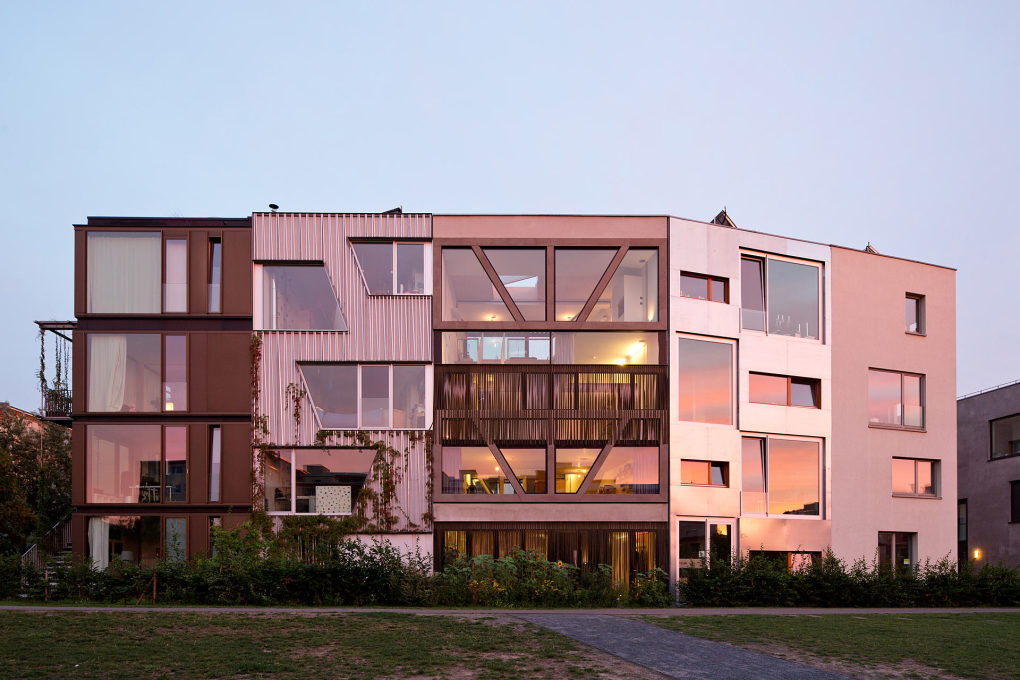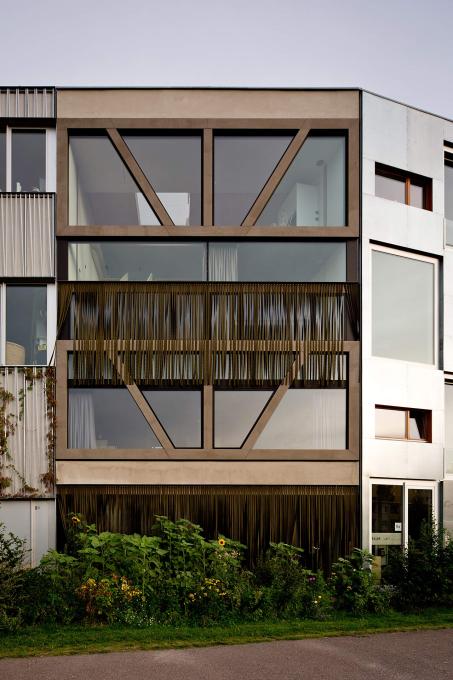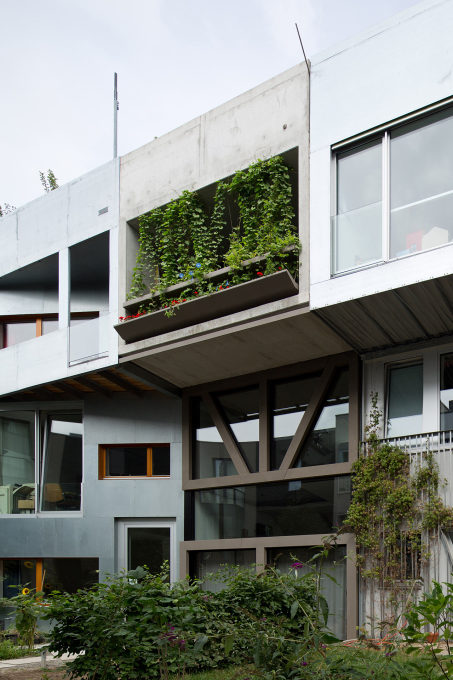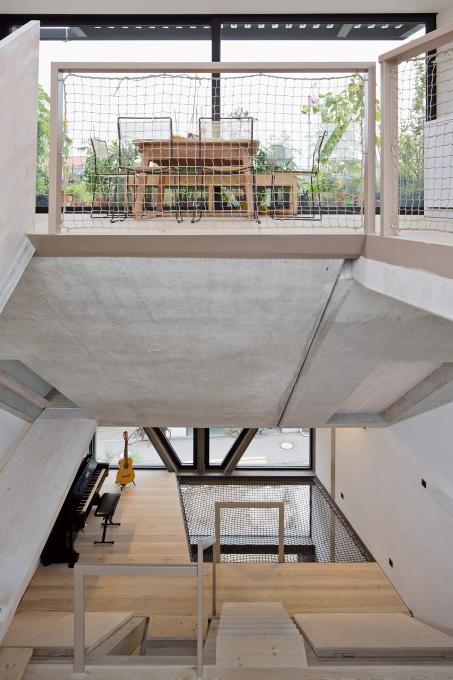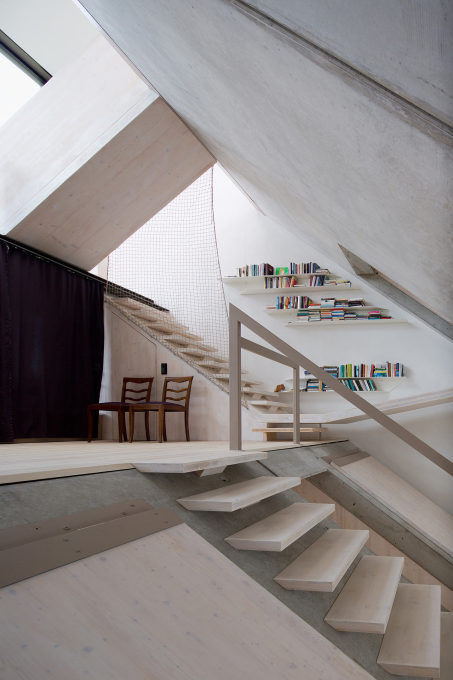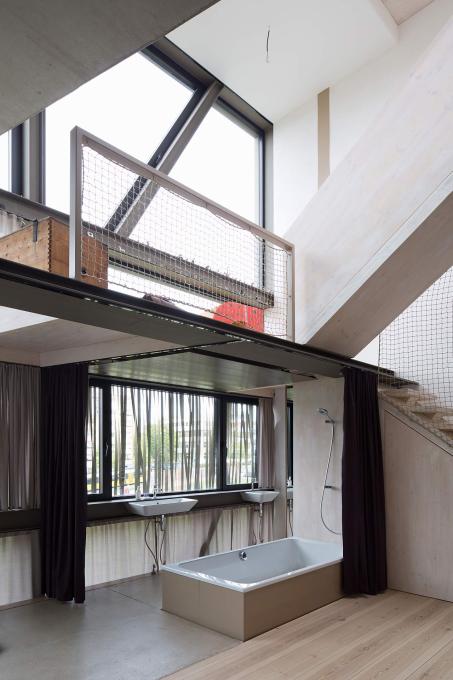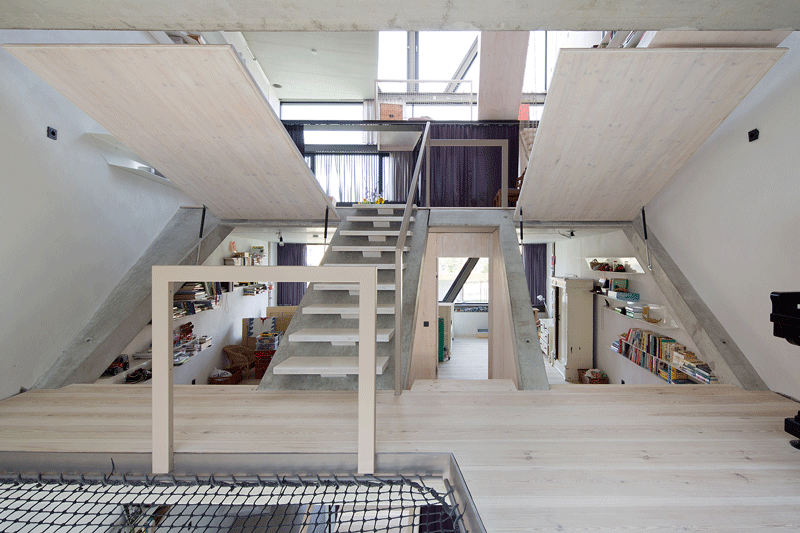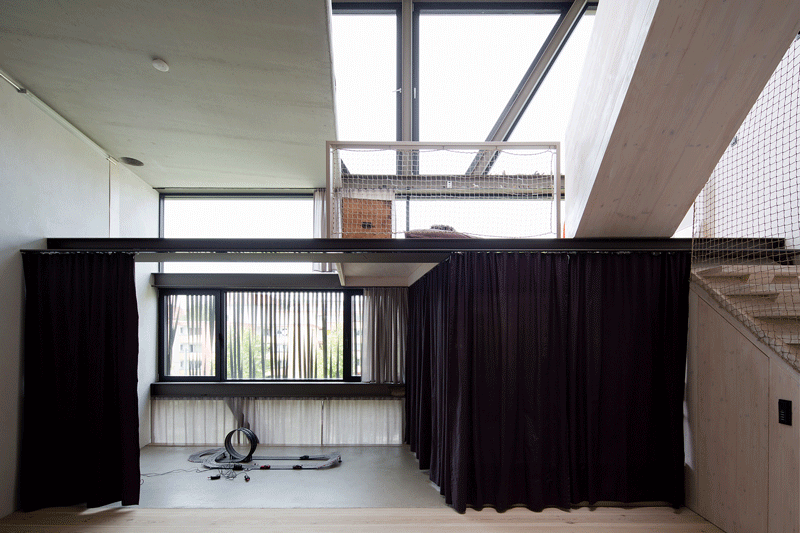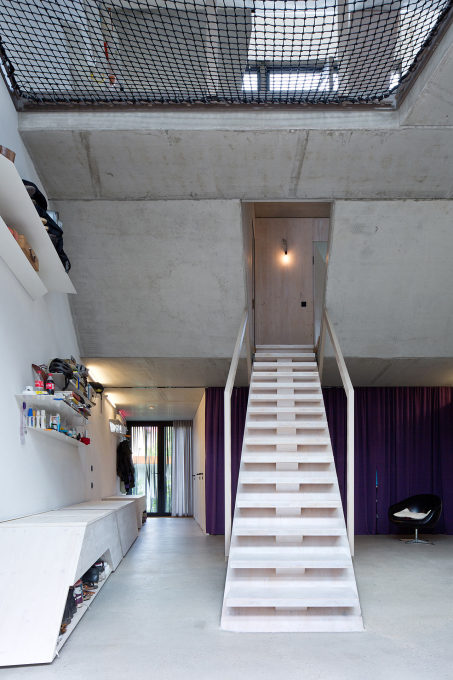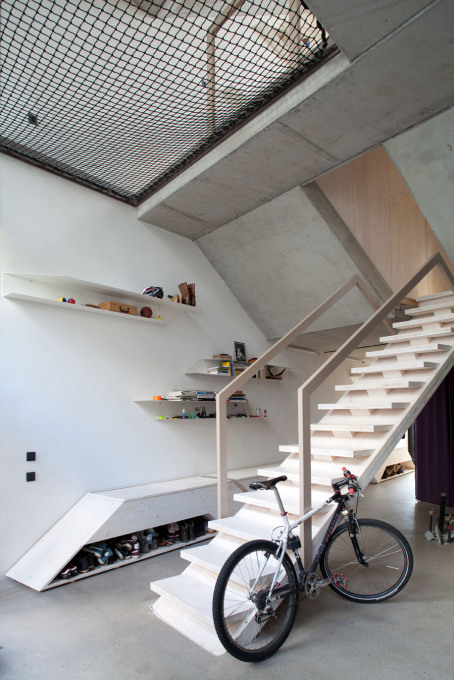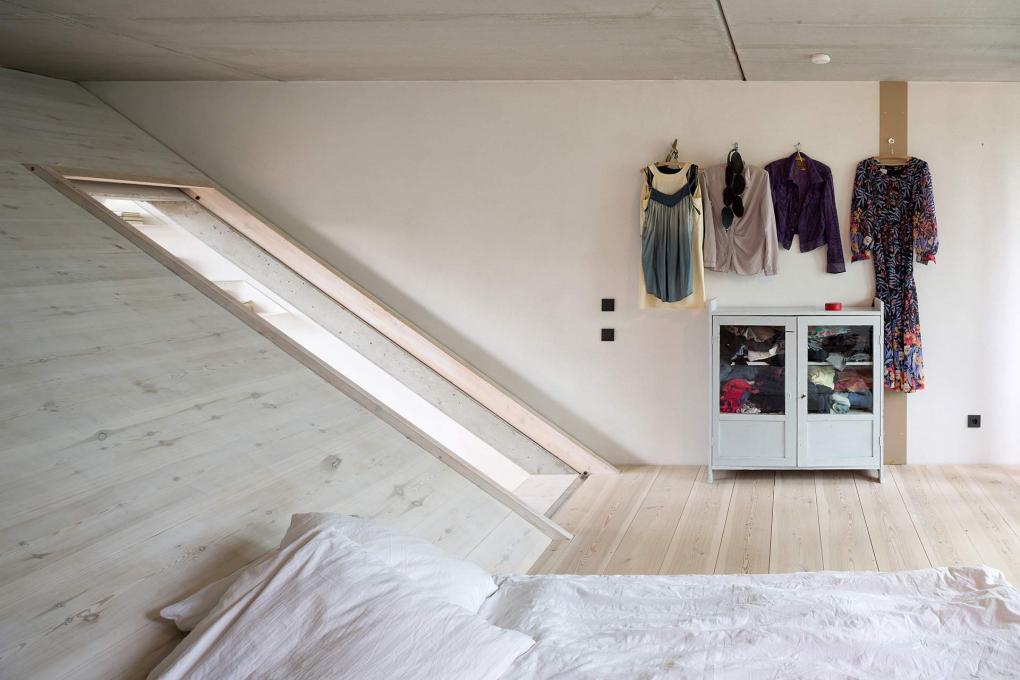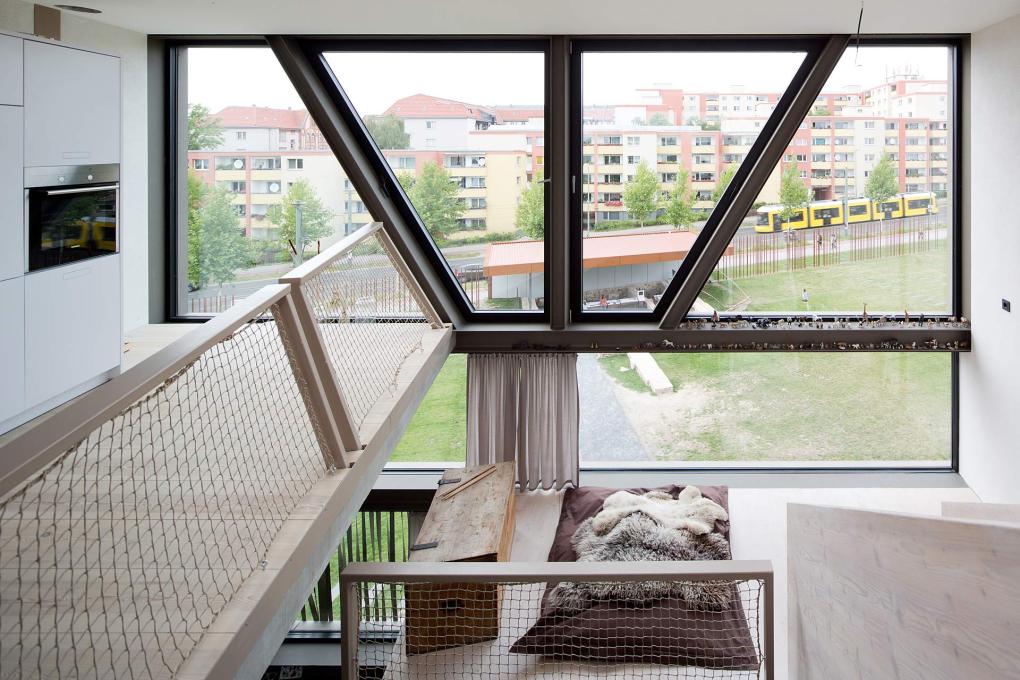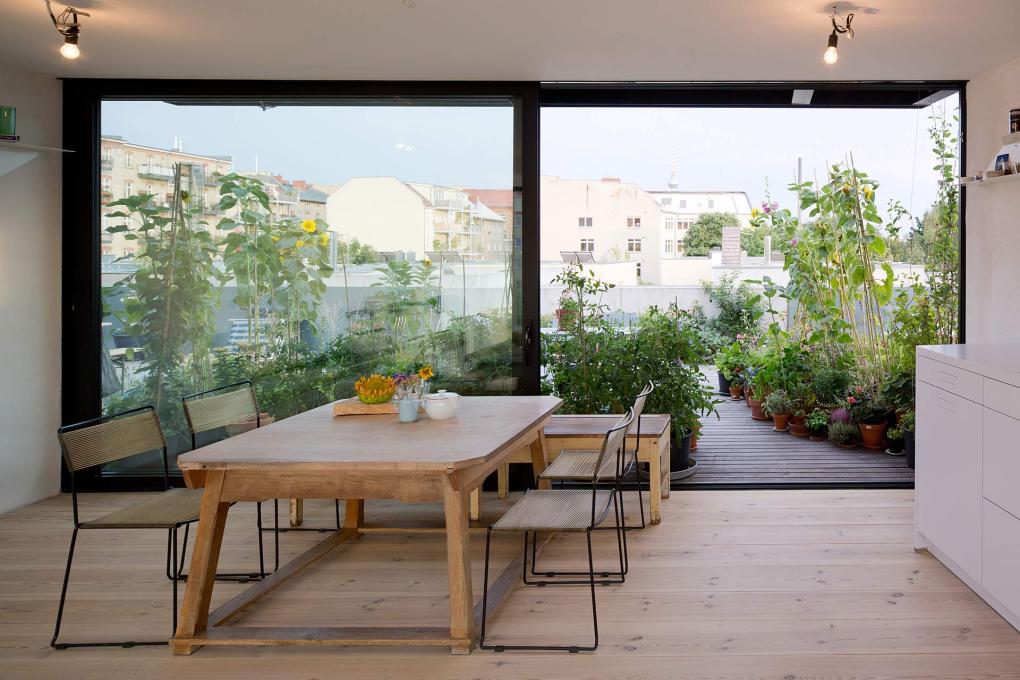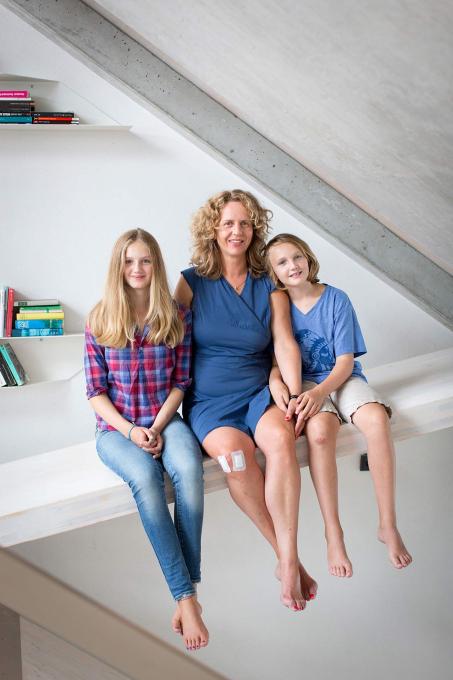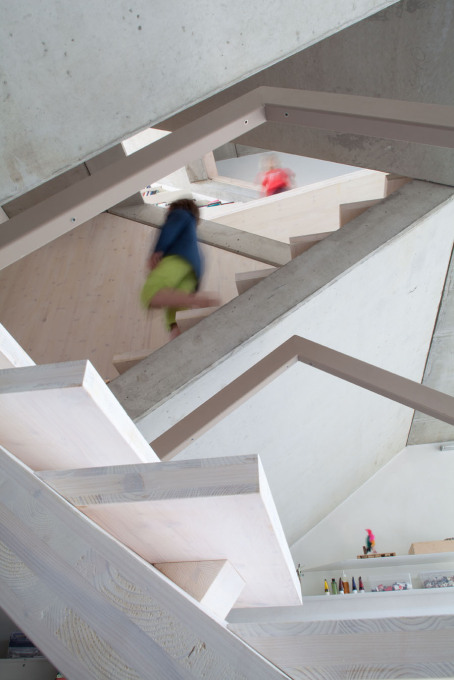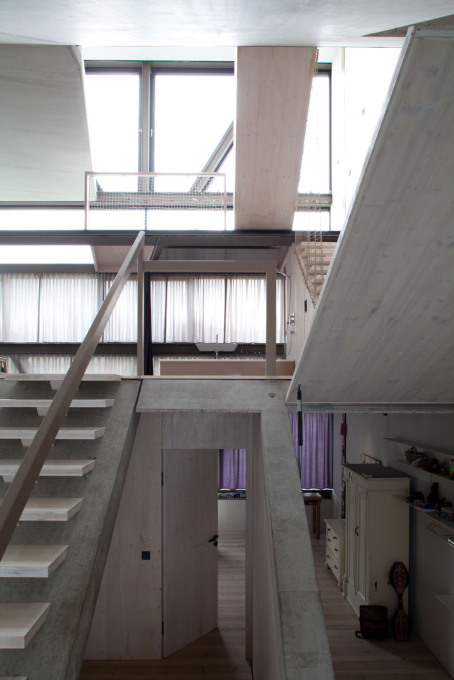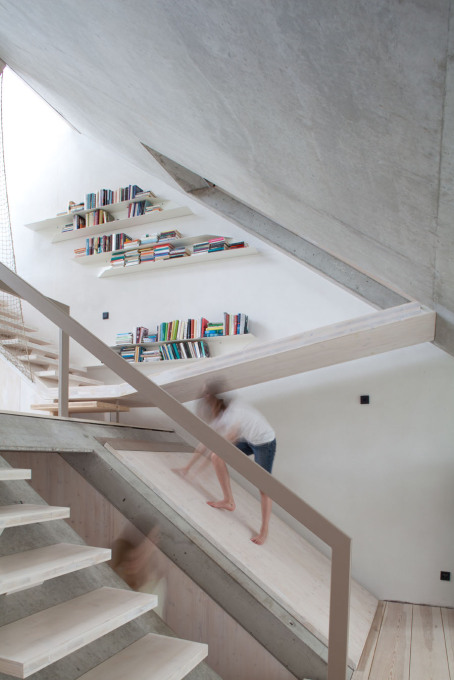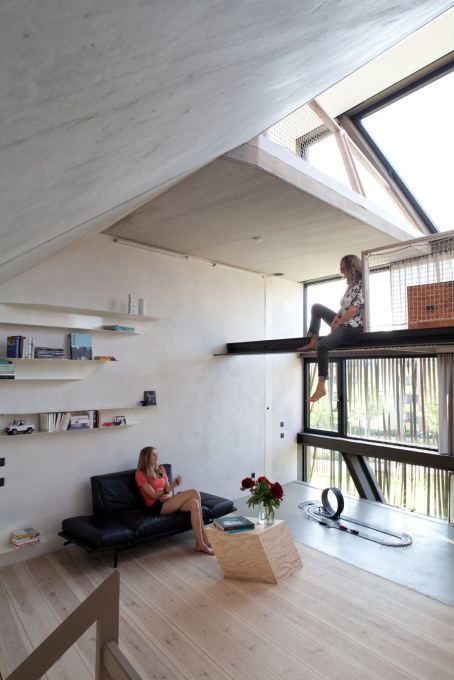A generic solution was not what architects Helle Schröder and Martin Janekovic had in mind when they designed their own house, which flows as a continuous space from floor to floor. Florian Heilmeyer met Helle Schröder at the house, which has a site that is equally unusual: overlooking the Berlin Wall Memorial and the former death strip.
One of the many problems with capitalism is that – for the sake of cost-efficiency and thus profitability – it constantly tends towards producing standardised solutions. This is particularly tragic in the vast field of “housing” where architects and urbanists have tried for many years to come up with solutions to fit everyone – which in the end fit no-one at all. Ways of living are just too manifold, even more so in a time of continuously growing individualisation.
The private home that Helle Schröder and Martin Janekovic (X-TH Architecture) have designed for themselves and their two children almost fell victim to these standardising forces of capitalism, for when they applied for a loan the banks refused at first to grant it to them. “They had all sorts of arguments against our concept”, remembers Helle Schröder smiling. “They were telling us, that our design reduces the floor area and therefore reduces the value of the house, too. They also told us that if there is no elevator just all these ramps and stairs, it gets harder to sell the house as it isn’t fit for elderly or handicapped people. Finally they were also asking how we wanted to live in the house once we ourselves grew old. While all we wanted was to create a house that we want to live in now!”
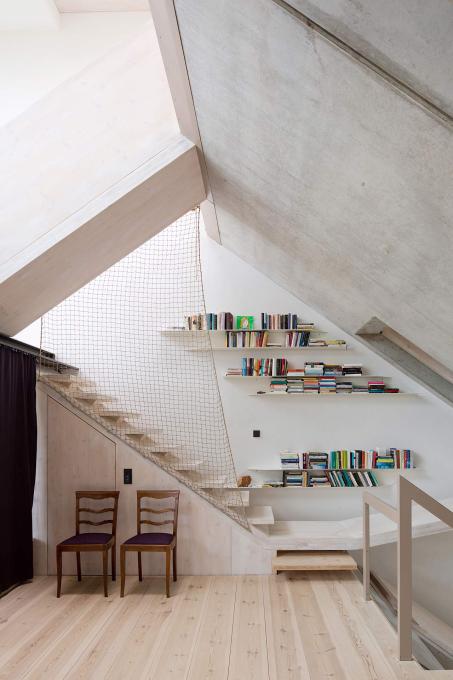
Inside, this remarkable house definitely feels very much like now! Its interior spaces are composed as a continuous space reaching from the entrance diagonally upwards through the building’s entire height of 12 metres: from entrance hall and play area, to a music level, to a living room with an open bath, to a reading area, to a kitchen with a wide roof terrace. “Floor plans never interested me very much”, says Schröder. “They have always seemed like a completely inadequate means of depicting a room.” Instead, she and Janekovic started the design of this house from the section, working mostly with models to create a diagonal sequence of spaces instead of rooms. “Stacking rooms on top of each other is quite boring. Our home was meant to function differently.”
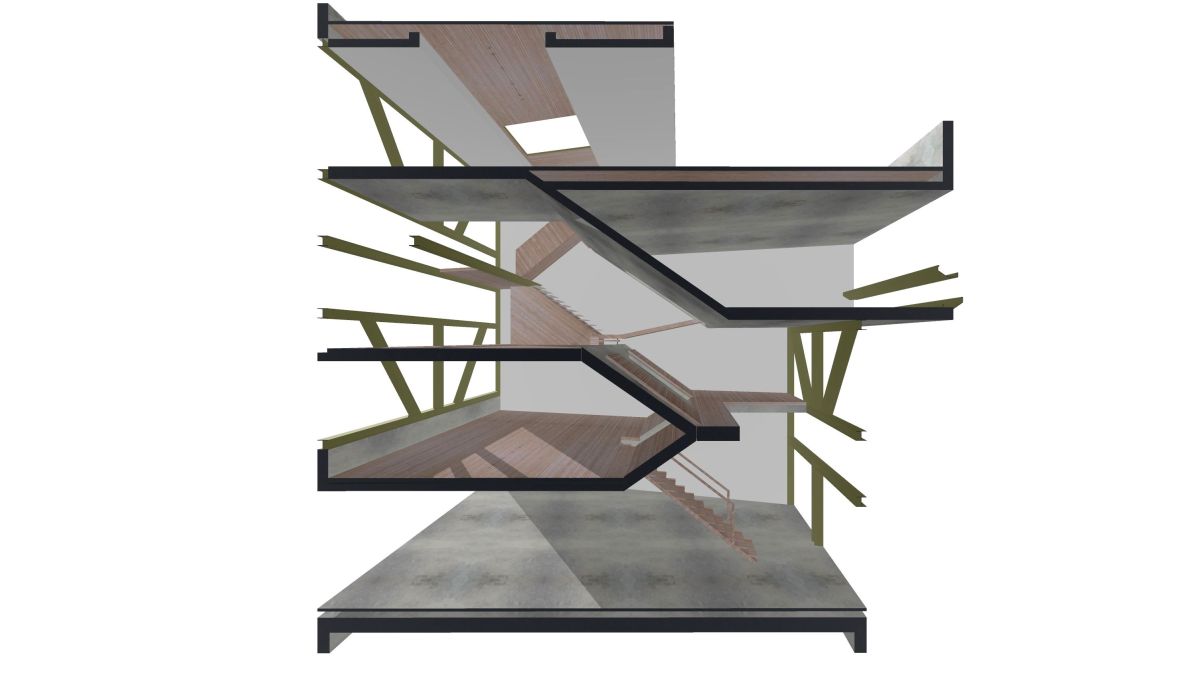
The only spaces that are separated from this main space are the two volumes which enclose the three bedrooms in raw concrete. Adding to its unusual vertical space(s), the house has been built on a trapezoidal lot of only 118 square metres. It is part of a small development of 16 townhouses, each with four floors, which are arranged in two terraces to form a dense village-like structure right at the former site of the Berlin Wall between Berlin-Mitte and Berlin-Wedding. The houses actually look out onto the site of the Berlin Wall Memorial, a context that makes these brand new houses look even more strange and displaced.
Yet it is this context which explains the houses rather grim façades. The exteriors of all the houses had to take the neighbouring memorial into consideration – which meant that “friendly” materials like wood or stucco were not permitted. X-TH chose a glazed façade structured by rather heavy steel girders spanning over the entire width of the building. The odd fringy draperies that have been placed before the ground and second floor are supposed to serve as a light screen to increase privacy in the building which is rather transparent on all other floors.
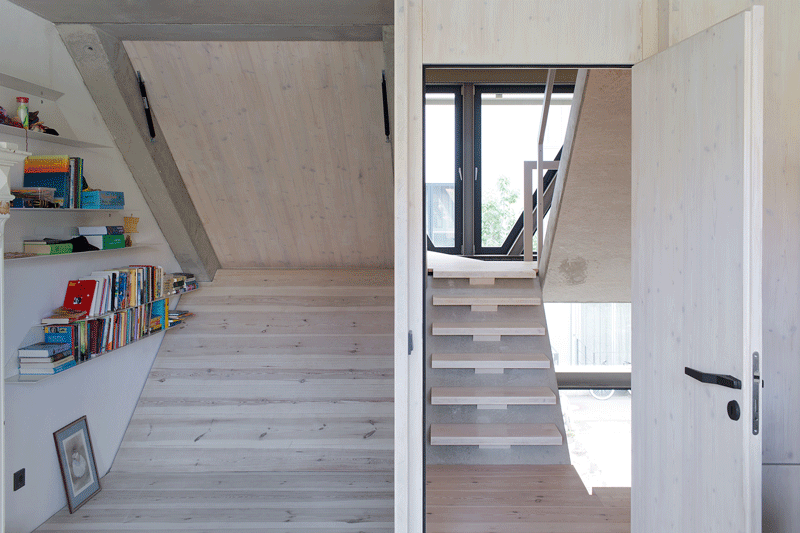
“We installed curtain rods above all windows, thinking we might get tired of being on display, especially at night”, says Schröder. “Yet until now we haven’t installed any curtains. I still like the way it is. When the tourists wave at us, we just wave back.” After all, visitors swamp the memorial only from nine to five. Afterwards the kids from the neighbourhood take over, playing soccer or hide-and-seek – which some people call “disrespectful” on a site where just a few years ago people really ran for their lifes. On the other hand, this is clearly how a city has to deal with its history, if it wants to remain a living organism instead of an open-air museum.
Somehow the house of Helle Schröder and Martin Janekovic offers a similar feeling inside: it is a decent playground. With all its stairs and ramps, and with its fair-faced concrete and light timber, it feels rather like a mountain or a ship. Within the light-filled spaces one can easily imagine growing old here. Hopefully the people from the bank now realise this too.
– Florian Heilmeyer




